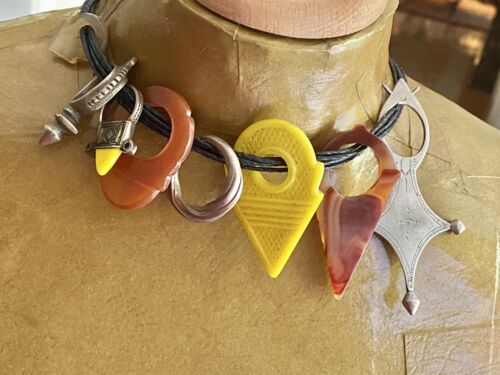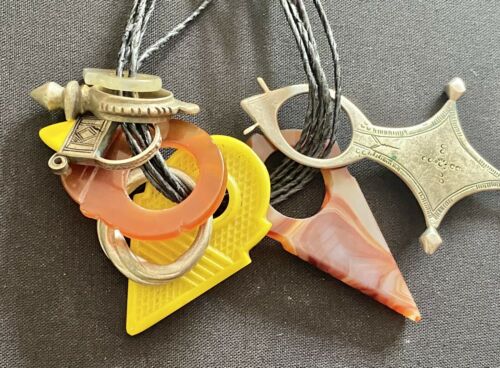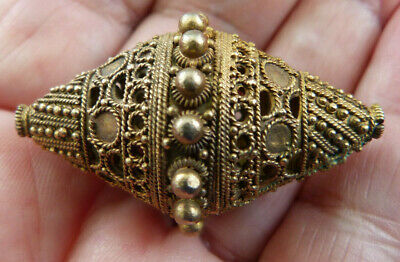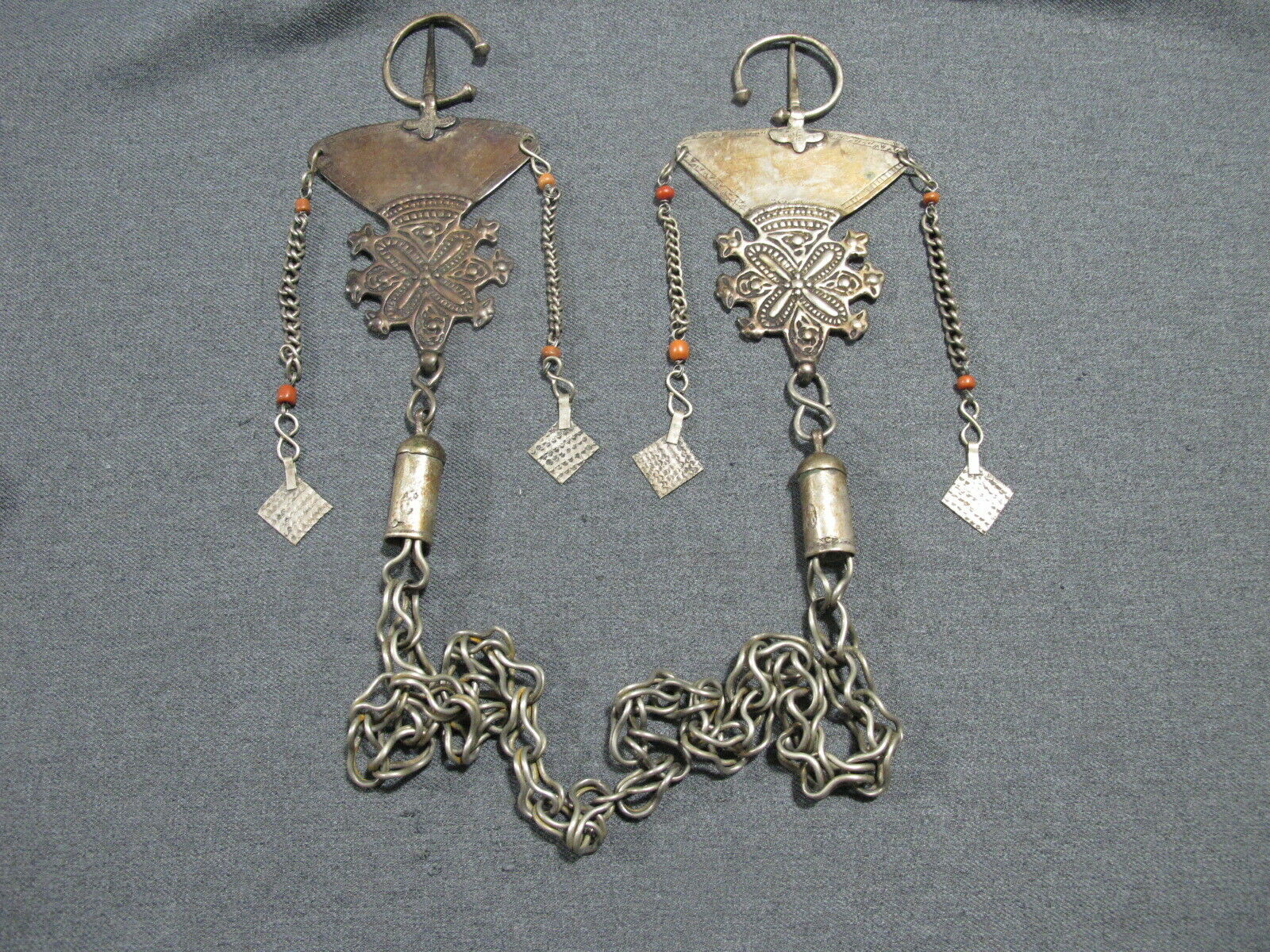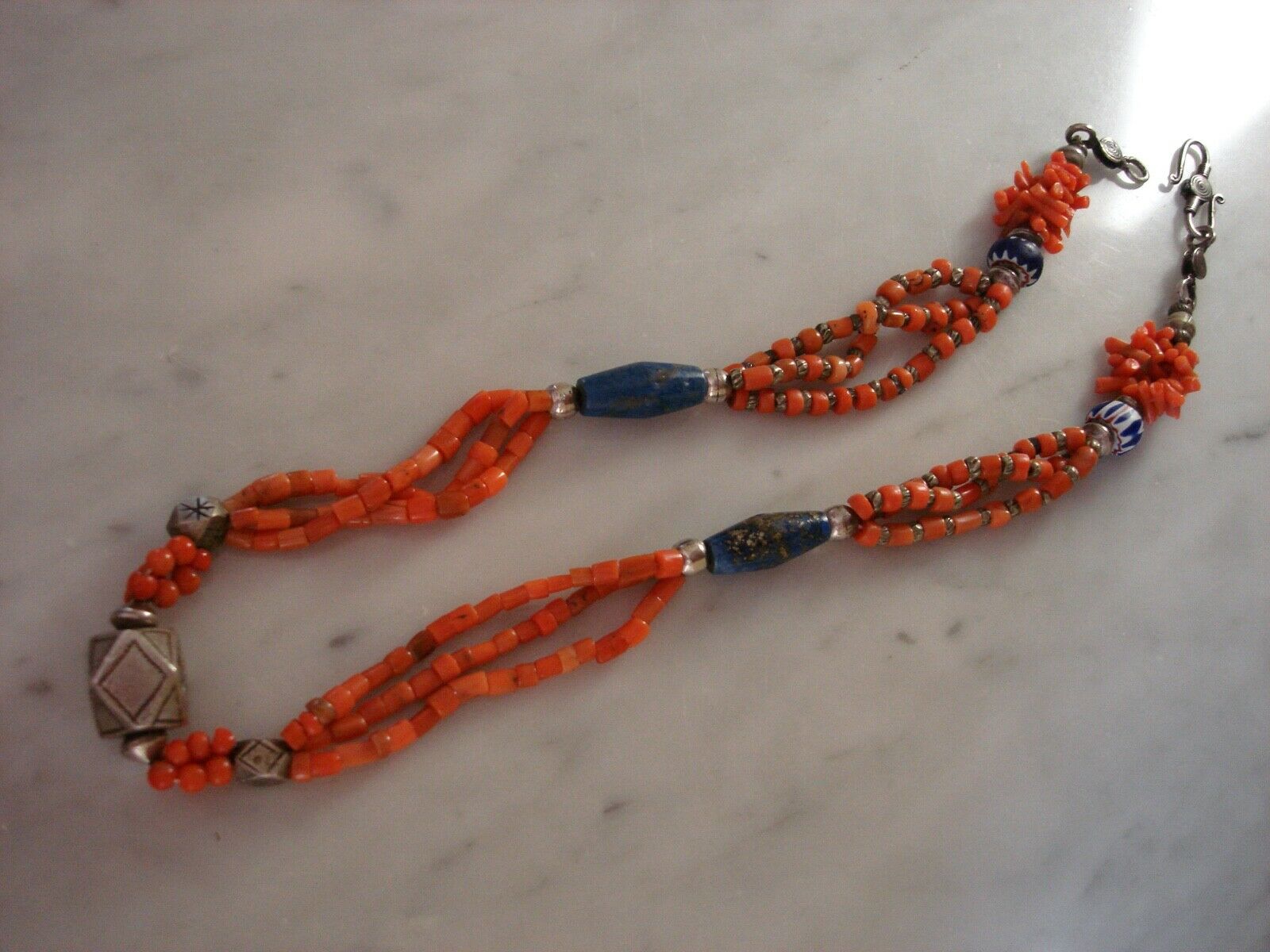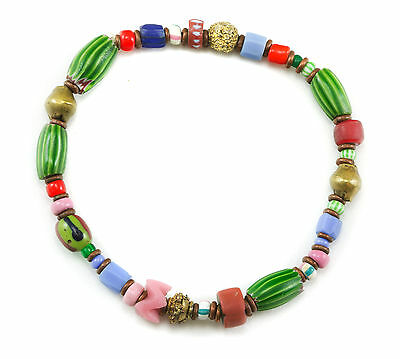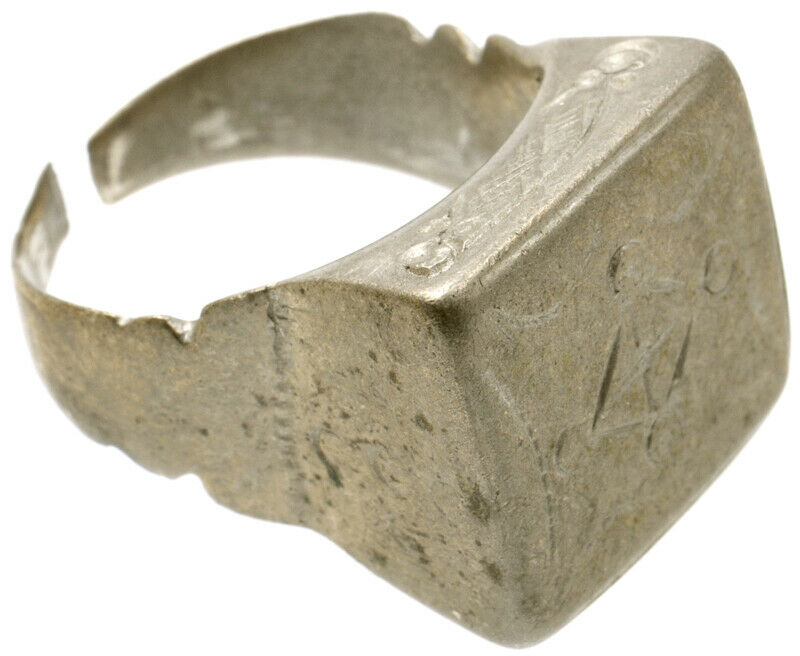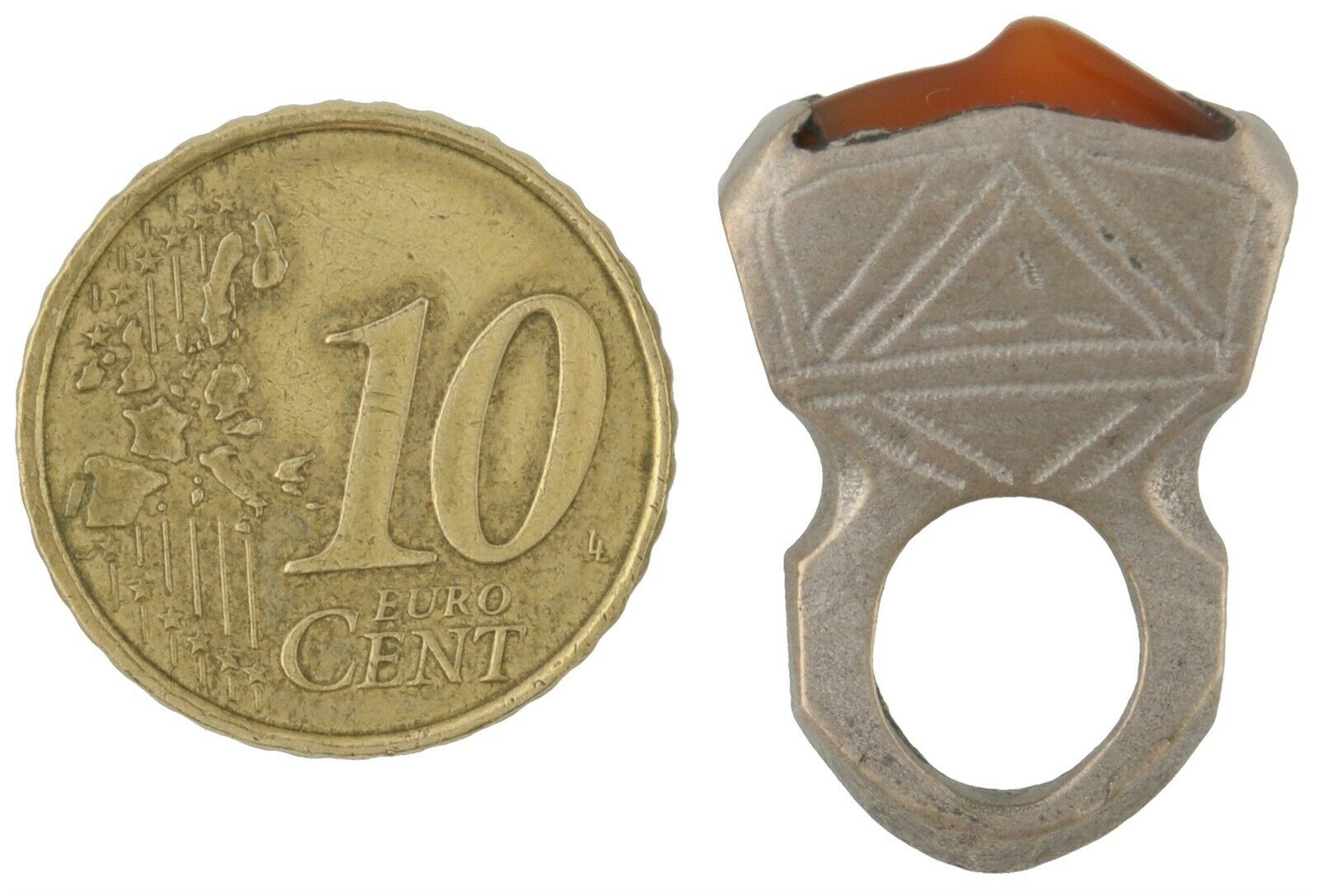-40%
Berber Zinder Fulani Agadez Cross Tanfout Idar Oberstein Tuareg Talhakimt Agate.
$ 189.55
- Description
- Size Guide
Description
Idar Oberstein Tuareg Talhakimt Tanfouk Ingall tanfout pendants with Moroccan sterling silver Agadez Zinder tribal cross with Fulani ring necklace.Shipped via 3 day first class mail usps.
Large Tuareg Carnelian Agate Telhakimt or Tanfouk with green Glass Talhakimt and Sterling silver zinder Cross with tuareg Ingall rings and Fulani ring.
Tuareg Jewelry Hair ornament Ring and Fulani ring Amulet with Agate Talhakimts. Leather Tuareg Necklace Cord.
Tuareg women used these Agate rings in their hair or as rings/ pendants.
A Beautiful Collection of Tuareg Agate Telhakimt or Tanfouk Zinder Ingall Crosses.
Zinder Crosses were used also as currency.
Measurement of pendants:
9 beautiful and rare pieces in this art:
1- 7 ropes Brown twisted Leather Cord necklace measures 20” in length.
2- Large sterling silver zinder Ingall Tuareg Berber cross is 3.15” in height by 2” in width and comes from Atlas Mountains made by silversmith artisans.
3- Large banded carnelian Idar Oberstein talhakimt is 2.4” in height by 1.2” in width.
4- Very rare Yellow glass Talhakimt or tanfouk
is 2” in height by 1.25” in width.
5- Yellow glass Tuareg ring tanfouk is 1.1” in height by 1/2” in width.
6- Tuareg zinder tanfout ring is
1.5” in length by 3/4” in width.
7- Fulani ring Zinder is 1” in height by 1.25” in width.
8- Banded rare yellow carnelian Agate small talhakimt is almost 1” in height by 1/2” in width.
9- Carnelian gemstone talhakimt hair ornament measuring approximately 1.75” in height by 1.35” in width.
Lovely Moroccan Berber hair rings, Tuareg cross and hair ornament pendants on brown leather necklace.
Easy to wear necklace with Tuareg silver cross and carnelian agate Tanfouk
pendants.
This is one of a few different kinds I carry in my shop so make sure you look at my inventory and check the pictures to see which necklace you like best!
They make a wonderful gift.
All pendants are strung on a brown or black leather necklaces.
Talhakimt pendants such as this were exported to West Africa for the bead trade throughout the course of the 20th century. Originally produced in the bead workshops of Bohemia from Czech Glass, they were molded using the Prosser method and coveted by tribal peoples as a talisman to ward off the evil eye and as part of traditional costumes. This is an original piece. Get your piece of history today!
Carnelian is said to aid health, long life and good fortune. It is also said to help one fulfil ones innermost wishes if worn near the heart. Warming and cleansing the blood and kidneys this stone works well in the orange and yellow. This stone can also be used to stimulate appetite, passion, emotions and physical energy.
Like the unexpected fire of a sunset, or the first flash of autumn brilliance, Carnelian captivates. Its bold energy brings a rush of warmth and joy that lingers, stimulating and empowering. Known as a stone of motivation and endurance, leadership and courage, Carnelians have protected and inspired throughout history.
A glassy, translucent stone, Carnelian is an orange-colored variety of Chalcedony, a mineral of the Quartz family. Its color varies from pale pinkish-orange to a deep rusty brown, though it is most known for its brilliant orange and red-orange crystals. Its name comes from a Latin word meaning "flesh."
In antiquity, as well as today, Carnelian is believed to help timid speakers become both eloquent and bold. Ancient Warriors wore Carnelian around their neck for courage and physical power to conquer their enemies. In Egypt it was worn by master architects to show their rank of builder, and alchemists of the Middle Ages used it as a boiling stone to activate the energy of other Chalcedonies.
The ancient Egyptians called Carnelian "the setting sun." In its orange hues, they identified it with the receptive or passive female energies, and associated it with the fertile menstrual blood of the mother goddess, Isis. In its red, red-orange to reddish brown shades, they considered it the active male energy stone, recognized by its glowing vibrant color. Carnelian is traditionally worn to enhance passion, love, and desire.
Agate is a stone of strength and is said to give courage, emotional strength and self-confidence. It enhances creativity and strengthens the intellect, making it a beneficial stone for both students and artists. It is also known as a good luck stone. As a stone of harmony, one of the things agate does is balance yin/yang energy. It can also lessen feelings of envy by grounding the emotions. Because of these harmonizing qualities, it is also considered by many to be an excellent stone for helping to heal and improve relationships.
Agate is a stone that transmits strength, creativity, protection, and courage onto its owners. It strengthens both physically and mentally. Although it assists in increasing energy, it does so only as needed. In this way, Agate acts as a conservative stone, applying its elements only when necessary. For individuals who need a boost, Agate is a useful stone as it offers courage and emotional strength while dispelling fear and envy. As Agate heals, it strengthens the body's connection to the earth and harmonizes its various elements. In Ancient times, Agate was found in the river Achetes in Sicily, which is where it gets its name. The stone was used before 3000 B.C. by the early Egyptians, and in jewelry in Ancient India. Agates acted as the foundation of the German stonecutting and polishing industry which boomed in popularity during the fifteenth through nineteenth centuries.
The Tuaregs are a nomadic desert tribe that inhabits a broad expanse of territory stretching from the edges of the Saharan desert of Morocco to the north as far as Burkina Faso in the south. Tuareg pendants features a unique design that may include the Milky Way, Berber Cross, Southern Cross, Shooting Star or other motifs made from white metal.
The Tuareg people (/ˈtwɑːrɛɡ/; also spelled Twareg or Touareg; endonym Kel Tamasheq, Kel Tagelmust are a large Berber oethnic confederation. They principally inhabit the Sahara desert, in a vast area stretching from far southwestern Libya to southern Algeria, Niger, Mali and Burkina Faso.Traditionally nomadic pastoralists, small groups of Tuareg are also found in northern Nigeria.
Tuareg
Kel Tamasheq
ⴾⵍ ⵜⵎⵛⵈ
Tuareg ethnic flag
The Tuareg speak the Tuareg languages (also known as Tamasheq), which belong to the Berber branch of the Afro-Asiatic family.
The Tuaregs have been called the "blue people" for the indigo-dye colored clothes they traditionally wear and which stains their skin. As semi-nomadic people, they are believed to be descendants of the Berber natives of North Africa.The Tuaregs have been one of the ethnic groups that have been historically influential in the spreading of their legacy in North Africa and the adjacent Sahel region.
Tuareg society has traditionally featured clan membership, social status and caste hierarchies within each political confederation.The Tuareg have controlled several trans-Saharan trade routes, and have been an important party to the conflicts in the Saharan region during the colonial and post-colonial era.
Located at the southwestern edge of Germany, ldar-Oberstein is the historic stone-cutting of Europe.
The industry was originally based on local deposits of agate, jasper, rock crystal and amethyst but beginning in the 19th century, all kinds ofrough gemstones began to be imported from around the world.
A great deal of this success was based on the manufacture of agate beads.
This not only discusses the history of the industry, but also provides in-depth information concerning the techniques and tools used in beadmaking and drilling.
Idar-Oberstein is a small town of roughly 50,000 inhabitants in a narrow, picturesque valley in the HunsrUck Mountains on the very western edge of Germany. It is located in the state of Rheineland- Pfalz, about 110 km southwest of Frankfurt am Main.
Idar and Oberstein were originally two separate towns, each conducting its own unique business in the gem and jewelry industries. Idar was the gem cutting center and Oberstein was known for its jewelry manufacturing.
Oberstein has long been only one of many jewelry-manufacturing centers in Europe, but Idar has had few rivals in the gem-cutting field. In 1933 The two towns were consolidated into one.
The gem-cutting region of Idar-Oberstein is now made up of the city itselfand many small hamlets that dot the surrounding hills.
Idar-Oberstein is widely recognized within the gemstone industry as the most significant European cutting center for gemstones other than diamonds.
Records show that gem cutting in the general region dates back to the 14th century.
